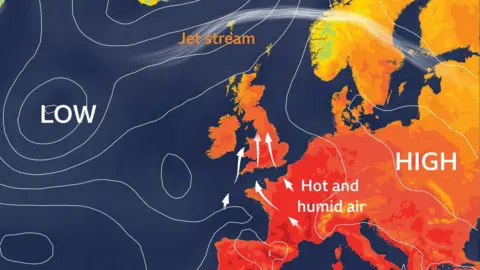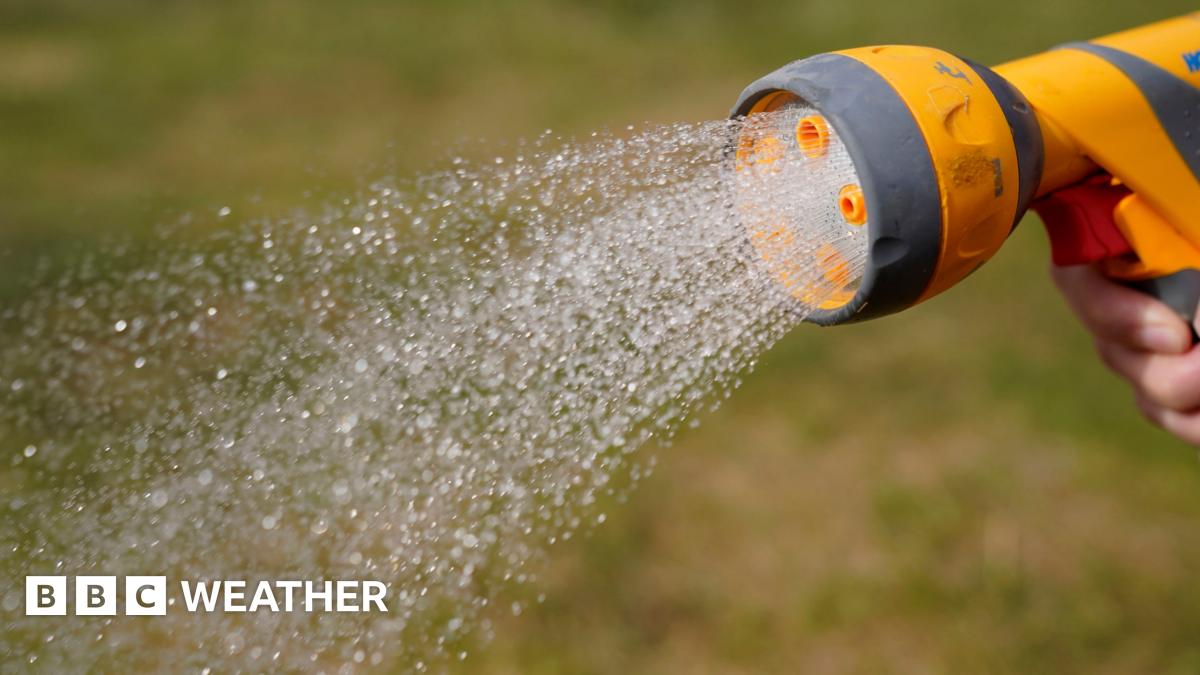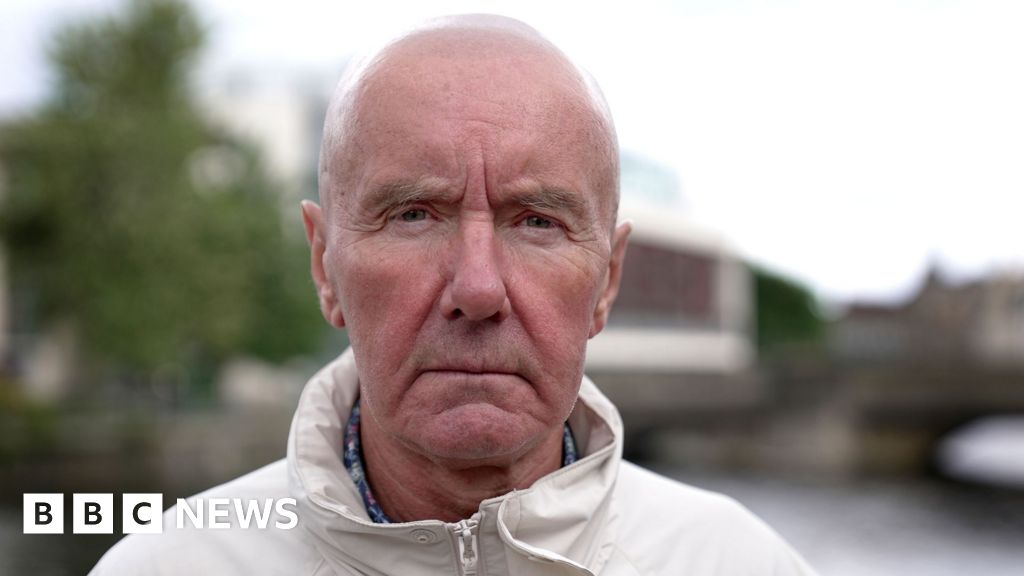Elizabeth Rizzini
BBC Weather

 EPA
EPA
Heat health alerts are coming into effect for the whole of England later, with amber warnings for most southern and central areas - meaning there could be travel disruption or increased demand on health services.
Following a warm night, temperatures are set to rise across the UK on Tuesday when the heat will peak for most.
Much of England and Wales will see 25-28C, reaching 34C in some areas, meaning heatwave thresholds are likely to be met in a number of regions this week.
Meanwhile, the national drought group - which includes the Met Office, regulators, the government, and water companies - has warned that England is now suffering from "nationally significant" water shortfalls.
The group said England is experiencing widespread environmental and agricultural effects from the shortage of water, which is hitting crop yields, reducing feed for livestock, damaging river wildlife and wetlands, as well as increasing wildfires.


A jet stream to the north and high pressure to the east is drawing up hot and humid air from the south
As high pressure has pushed eastwards, the UK has been drawing in some very warm air on a southerly to south easterly wind from the European continent, where temperatures have been particularly high.
On Monday, Bergerac and Bordeaux in France set all-time records at 41.4C and 41.6C. There are red warnings for the heat in France and in Spain.
The amber heat health alert – issued by the UK Health Security Agency – begins across the Midlands, East Anglia, London and South East England at 09:00 and continues until 18:00 on Wednesday.
North East England, North West England, Yorkshire and Humber and south-west England have a yellow alert for the same period.
Yellow alerts warn of possible impacts on health and social services.
Temperatures across Scotland and Northern Ireland could reach 23-26C, maybe 27C in eastern Scotland and the Borders.
Much of England and Wales could see 25-28C, but the low 30s are again likely for central and southern England, and south-east Wales. Anywhere from the south-west Midlands to west London could see 34C.
This would still not make it the warmest day of the year so far, although the year's top temperature in Wales may be threatened.
Highest temperatures of 2025
- England - 35.8C Faversham, 1July
- Wales - 33.1C Cardiff Bute Park, 12 July
- Scotland - 32.2C Aviemore, 12 July
- Northern Ireland - 30C Magilligan, 12 July

 EPA/Shutterstock
EPA/Shutterstock
Temperatures could reach 34C in the capital
Some could see a fourth heatwave of the summer this week, the official criteria for which is when locations reach a particular threshold temperature for at least three consecutive days. That varies from 25C across the north and west of the UK, to 28C in parts of eastern England.
Conditions will stay warm for a third day for most areas on Wednesday, though temperatures could dip a little in the west.
There will be more cloud and it will feel more humid. There will be a slight shift in wind direction to more of a south-westerly meaning the highest temperatures could be across parts of East Anglia, again in the low 30s.
The heat will ease for most on Thursday with some thunderstorms and some cooler, less humid air into Friday.
However, as high pressure builds in once more it is likely temperatures will rise again into the weekend to the mid-to-high 20s, with 30C possible in southern England and south Wales.
This year saw the warmest and sunniest spring on record across the UK.
June and July saw the second and fifth highest average temperatures for those months respectively.
There have been 13 days so far this year that have seen temperatures of 30C or more in the UK this year.
That number will rise further this week, but is still low compared with the 19 days above 30C in 2022 and 34 days in 1995.
Rainfall for August has been very variable. Despite it only being 11 days into the month, some parts of northern Scotland are not far from recording their average August rainfall already, while some parts of southern England, such as Heathrow and Kew Gardens, have yet to record any measurable rain.

 2 months ago
106
2 months ago
106

















































